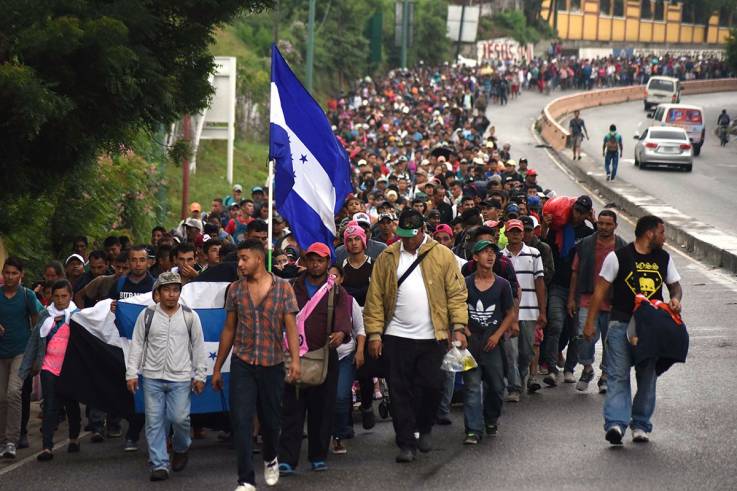A march which has been described as the largest movement of migrants north through Mexico in recent history has been progressing steadily for almost three weeks as thousands of Central American migrants trek toward the United States from Honduras.
The number of interested migrants quickly grew to thousands following a call on social networks relayed by a former Honduran deputy as desperation, unemployment, poverty, insecurity and political intimidation forced many to join the caravan. Bartolo Fuentes, a popular politician and member of leftist former president Manuel Zelaya’s Freedom and Refoundation Party had reposted a poster on his Facebook page inviting people on a “Migrant march” with a slogan: “We’re not leaving because we want to, but because we are being expelled by violence and poverty”.
The migrants, including women and children, got into a hitch last Thursday when they reached a border bridge between Mexico and Guatemala. By Saturday, Mexican authorities opened the border for women and children on the overcrowded bridge, taking them to a shelter in the city of Tapachula. Many later crossed a river below using makeshift rafts and continued marching north.

According to various reports, the caravan has comprised between 3,000 – 5,000 people at various times as it moved through Guatemala, but that some 2,000 had since returned home.

This march has been received with stiff opposition from President Donald Trump and the white house with threats of detaining families or separating children from their parents if they eventually reach the US border.
In a terse warning to Honduras, President Trump threatened to cut off aid to the country if the caravan was not turned around. “The United States has strongly informed the President of Honduras that if the large Caravan of people heading to the U.S. is not stopped and brought back to Honduras, no more money or aid will be given to Honduras, effective immediately!” With only two weeks to go before the United States votes in key midterm elections, the caravan has become a politically loaded issue.
This unprecedented event has posed a number of security concerns for Mexico and the US. A day after some of those 1,500 migrants clashed with security forces at the Guatemala-Mexico border, Mexico deployed hundreds of police officers, helicopters and boats along its porous southern border with Guatemala on Monday in a bid to halt the entry. One person reportedly died while many were injured during this clash.
Although limited, Honduran immigration to the United States began in the 1950s. In the 1980s however, there was unprecedented immigration both within the region and to the United States. After Hurricane Mitch struck in October 1998, illegal immigration from Honduras to the United States spiked dramatically. In 2011, around 694,500 individuals residing in the United States reported Honduran ethnicity/race, and there were roughly 491,000 Honduran-born immigrants. In the same year, the U.S. Department of Homeland Security (DHS) estimated that 380,000 of the 11.5 million unauthorized immigrants in the United States were from Honduras. This means that roughly 77 percent of the 491,000 Honduran-born immigrants residing in the United States that year did not have legal status.
From all indications, the migration of Hondurans to the United States shows no signs of abating.
Photo Credit: ORLANDO ESTRADA/AFP/GETTY IMAGES



